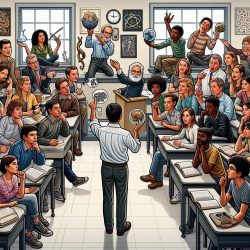Introduction
In the world of education, teaching students to think critically is a crucial skill that can shape their understanding of the world. A fascinating approach to fostering critical thinking is discussed in the research article "Why I Teach the Controversy: Using Creationism to Teach Critical Thinking" by P. Lynne Honey. This blog explores how educators can implement the outcomes of this research to enhance their teaching strategies and improve student outcomes.
The Research
The research article argues for the inclusion of controversial topics, such as creationism, in the classroom to promote critical thinking. While creationism is not scientifically supported, discussing it in a science class can help students distinguish between scientific and non-scientific approaches. The study highlights that teaching content alone is insufficient for developing critical thinking skills; instead, students must engage with controversial topics to practice metacognitive strategies.
Implementing the Findings
Here are some practical ways educators can implement the findings from the research:
- Encourage Open Discussions: Create a classroom environment where students feel comfortable discussing controversial topics. Encourage them to ask questions and challenge ideas.
- Model Scientific Thinking: Demonstrate how to evaluate evidence and apply scientific methods to controversial topics. This can help students understand the importance of evidence-based reasoning.
- Use Real-World Examples: Incorporate current events and real-world examples to illustrate the relevance of critical thinking. This can make the learning experience more engaging and relatable.
- Promote Metacognitive Strategies: Teach students to reflect on their thought processes and evaluate their reasoning. This can enhance their ability to think critically across different domains.
Encouraging Further Research
While the research provides valuable insights, educators are encouraged to conduct further research to explore additional strategies for teaching critical thinking. Investigating the effectiveness of different approaches can lead to improved teaching practices and better student outcomes.
Conclusion
Teaching critical thinking is an essential component of education, and incorporating controversial topics like creationism can be an effective way to develop these skills. By implementing the strategies outlined in the research, educators can create engaging and thought-provoking learning experiences that prepare students for the complexities of the modern world.
To read the original research paper, please follow this link: Why I teach the controversy: using creationism to teach critical thinking.










